Making Hungary a cycling country
In Hungary, according to a representative research conducted in 2022, 16% of the population uses the bicycle as their primary means of transportation. There is momentum for increasing infrastructure and cycling practice in the country, both for tourism and daily use. And EuroVelo development is, of course, part of the picture, with the launch of EuroVelo 14 – Waters of Central Europe in 2020 and its extension to Debrecen in 2023, and improvements to all the three other EuroVelo routes crossing the country.
The Hungarian National EuroVelo Coordination Centre tells us more about the development of cycling in the country, the institutional support and the progress in cycling-friendly services and multimodality in an article that is sure to inspire other states and regions in Europe and beyond.
Developing infrastructure on EuroVelo routes
The first step towards more cycling is definitely more cycling infrastructure. In Hungary, 1,850 km of cycle paths have been built in the last decade, and another 2,500 km have been designated as ridable routes. The developments also affect the EuroVelo network and the four routes that cross Hungary.
EuroVelo 14 – Waters of Central Europe was launched in 2020. Starting in Austria, the route crosses Hungary from west to east, passing the largest lakes and thermal areas between Szentgotthárd and Debrecen. These lakes are very popular destinations among tourists and cyclists, too. To better connect with these tourist destinations, an important step is the completion of the bicycle route linking the Hungarian capital, Budapest, with Lake Balaton. This route, called BuBa, is one of the key points of the EuroVelo 14 extension launched in March 2023, during ITB in Berlin.
EuroVelo 11 – East Europe Route runs along Hungary's second-largest river, the Tisza, and connects its second-largest lake, Lake Tisza. It also crosses the famous wine region of Tokaj. The route has been renewed in the eastern part of the country, where many cycling developments had already taken place.
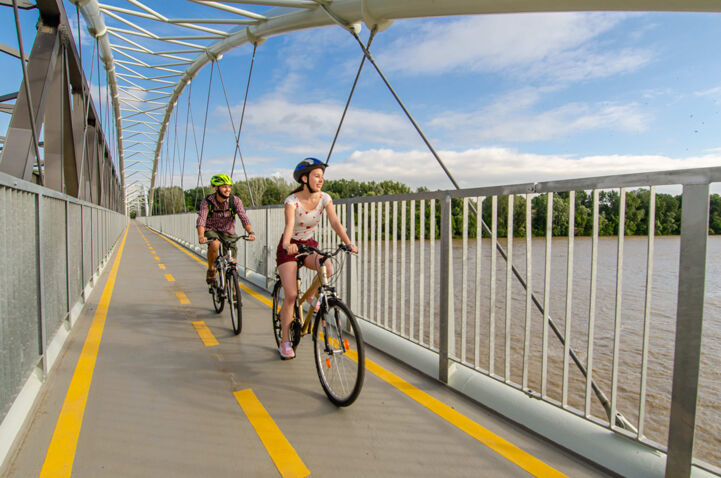
EuroVelo 6 – Atlantic-Black Sea is deservedly the most popular Hungarian route among domestic and foreign visitors, as it runs 420 kilometres along the Danube. The route has been improved in several sections, for example between Győr-Gönyű-Komárom, Dunaalmás, Budapest and Szentendre, and between Budapest and Dunakeszi, where new sections have been built or expanded. The partially newly-built and partially renovated sections from Budapest to Szentendre and Dunakeszi are important for daily commuting in addition to tourism.
EuroVelo 13 – Iron Curtain Trail goes in the west and south of the country, marking the border with the neighbouring countries. Most of the border sections on EuroVelo 13 are signposted, also thanks to cross-border cooperation and the Amazon of Europe INTERREG project. The future goal is to signpost even incomplete sections. Lake Fertő, a treasure of biodiversity, is located on EuroVelo 13 in the northwest, close to the border with Austria.
Counters and research: supporting with numbers
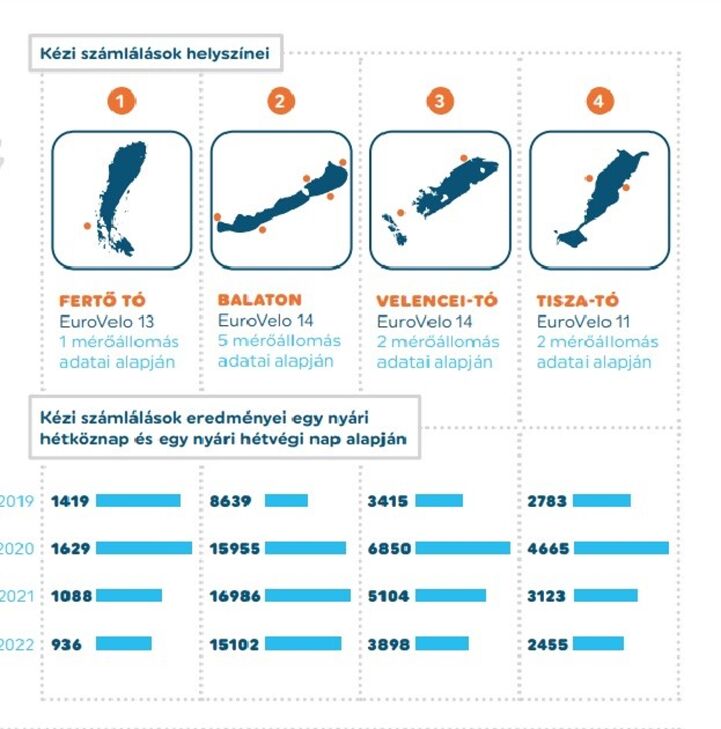
Automatic bicycle traffic counting devices operate at more than 70 locations in the country, and manual counting is also done annually during special periods. Based on the data, it is clear that the number of cyclists is increasing.
Lake Balaton, Lake Velence, Lake Tisza and Lake Fertő can be cycled around, and they have an adequate network of service providers and infrastructure. The image shows the annual turnover of the great lakes of Hungary with manual counts. All four lakes are part of EuroVelo routes. The numbers show the total number of cycling tourists.
A national representative research about cycling in Hungary is done every two years. The 2022 research is also available in English and has lots of interesting data about the cycling habits of Hungarians: the bicycle is the primary means of transportation for 16% of them, while 40% cycle at least weekly. While Budapest is lagging behind and long-distance cycling tourism is uncommon, the bicycle is more used in cities and villages, and it is more popular among women than men: 74% of women ride a bicycle, and ‘only’ 61% of men. The full research is available at this link.
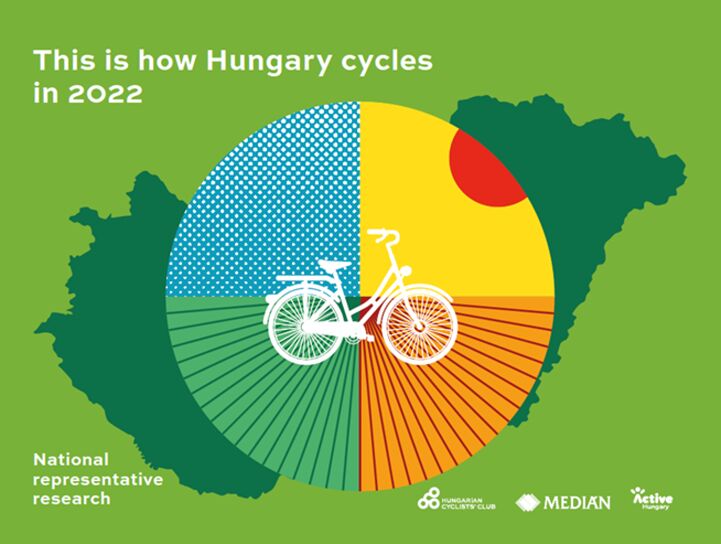
Expanding cycle-friendly services and multimodality
In 2020, European cycling-friendly service providers and ECF held a conference in Budapest, which adopted a declaration containing the basic principles of the cycling-friendly service network. Keeping European good practices in mind, the Hungarian cycling-friendly service provider network was introduced and it now has nearly 700 certified members. The aim of the scheme is to serve cyclists’ needs with high-quality services, increase the number of guests and revenues and improve cooperation between service providers on local and regional levels. The goal is to have 1,500 members of the network by the end of 2023.
In connection with this, MAKETUSZ has developed the Cycling Friendly application. The new application includes cycling-friendly restaurants and accommodations, attractions, bike parks, water refill points, repair stations, bike rest areas, and routes for both beginners and advanced cyclists.
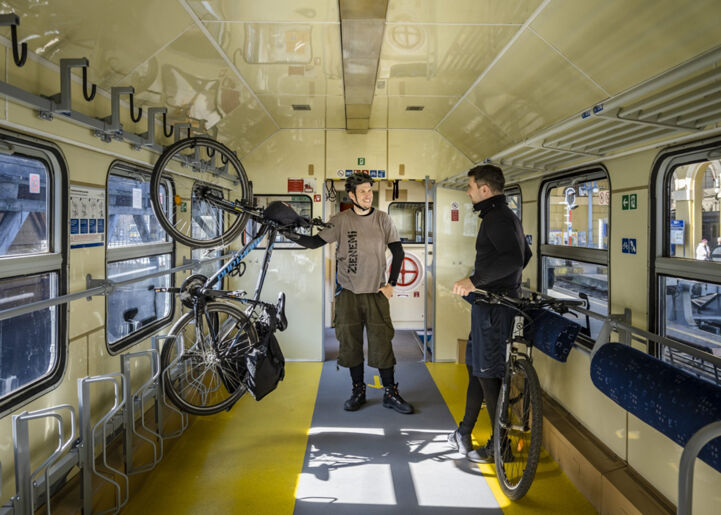
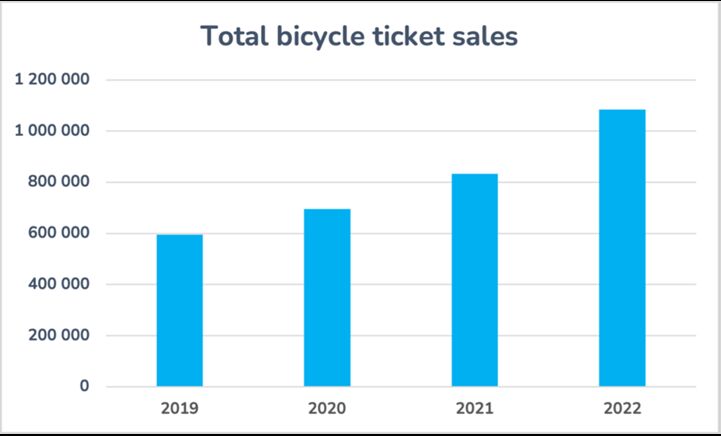
The Hungarian State Railway Company (MÁV-START) is constantly expanding its bicycle transportation services, and more and more people are taking their bike on a train. It is no coincidence that MÁV was ranked 4th on ECF's 2021 Cyclists Love Trains report, as one of the most cycling-friendly railway operators in Europe. In 2022, more than 1 million people travelled by train with bicycles, and the number of tickets sold increases every year.
At the most popular cycling areas such as Balaton and Lake Tisza, MÁV offers special services (more trains and more capacity) in the summer season. At the stations, MÁV employees help with the quick loading and unloading of bicycles. Bicycle transport has also started on domestic bus routes, on a pilot basis in popular domestic tourist areas, for example in the direction of Mátra, Lake Tisza and Eger.
An institutional system to develop cycling
All these developments require a strong institutional organization and support, to better coordinate infrastructure and promotion efforts.
The State Secretariat for Active Hungary was established in 2016 and it is politically responsible for the coordination and development of active tourism, including cycling. The Department for Active Mobility operates within the Prime Minister's Office, and its employees are responsible for cycling policy and regulation, coordination and financing of developments and operation of cycling routes.
MAKETUSZ, the Hungarian Cycling Tourism Association, was founded soon after. It is an umbrella organization that supports domestic cycling developments, participates in EuroVelo coordination tasks and has a number of independent programs. Thanks to the developments, the number of cyclists in Hungary has increased significantly.
The Center for Development of Active and Ecotourism (AÖFK), founded in 2019, is responsible for the promotion of cycling, hiking and canoeing, among other outdoor activities. In addition to printed and online communication, it launches independent programs for the development and promotion of cycling tourism, and also prepared plans for hundreds of kilometres of bicycle paths, developed the National Cycling Strategy 2030, and organized professional conferences.
All these three organisations – the State Secretariat for Active Hungary, MAKETUSZ and AÖFK – are part of the National EuroVelo Coordination Centre for Hungary.
Strategic planning to achieve long-term goals
This year, a lot of progress has been made in defining strategic documents to plan the development of cycling and cycling tourism in the long term. In the spring, the National Active Tourism Strategy 2030 and the National Cycling Strategy 2030 were published. The cycling strategy aims at making Hungary the number one bicycle-friendly country in Central and Eastern Europe by 2030. The main goals of the strategy are to improve the conditions for everyday cycling and cycling tourism and to improve traffic safety. The measures include the appropriate development of the infrastructure, the expansion of the service provider network, raising awareness and improving communication.
The proportion of those who cycle at least once a week should reach 50% by 2030, and the proportion of those who choose bicycles and electric bicycles as their main means of transport should reach 18% compared to 2022. The development of at least 5 bicycle highways and at least 50,000 new bike racks in cities will help promote cycling as well. In the field of tourism, the cycling tourism core network should be extended to 15,000 km by building 1,500 km of bike paths and marking 4,500 km of new bicycle routes. The number of cycling-friendly providers should reach 3,000 and 10 regional bicycle centers should be established nationwide. Through safe infrastructure and various education and training programs, the number of deaths in cycling accidents should be halved by 2030.
There are extra programmes to develop cycling practice and cycling tourism in Hungary, on and beyond EuroVelo, which may serve as an inspiration for other countries.
- BalatonBike365 (BB365) was launched in 2022. This project had the aim of developing the country's top destination, lake Balaton, but also of managing over-tourism and integrating service providers located further from Lake Balaton into cycling tourism. 800 km of newly signposted cycling routes, three new cycling centres and an application in 6 languages were created.
- The Horizon adventure cycling route is a new project for bikepackers, a mostly off-road route between Tokaj and Szentgotthárd. It is currently being planned and will go through the landscapes of the North Hungarian Mountains, the Transdanubian Mountains and the Zala Hills.
- As part of the Kid’s Bike Camp program, children aged 12-18 are participating in organised bicycle tours all over the country for a week. Currently, there are 13 routes to choose from. During the one-week-long tour, students discover natural and cultural sites with the help of qualified teachers and tour guides. During the trips, groups receive a discount on Hungarian railways. The tour is also available for low-income families, the program package includes travel, accommodation, meals, bicycle rental and special programs.
- The Ring series promotes the cycling routes of the most beautiful Hungarian mountains through organised events. The series was created by MAKETUSZ with the aim of encouraging as many people as possible to go cycling through spectacular, but easier to complete, safe circular tours (hence the name "Ring"). Nearly 2,700 bikers have already participated in the events so far.
- Hungarian Divide is an unsupported bikepacking event that reached its third edition. The total distance is 1,400 kilometres, with an elevation gain of 23,000 meters. Several smaller one-day events will be organised in different parts of the country for the Hungarian bikepacking community.
Article and coordination by Zsóka Abelovszky, Miklós Berencsi and the Hungarian NECC team. Final editing by Jessica Casagrande.